Peru is a land of wonders, where ancient history meets breathtaking landscapes. From the mysterious ruins of Machu Picchu to the vibrant streets of Lima, this South American gem offers a journey through a tapestry of cultural and natural marvels.
Each corner of Peru tells a different story, inviting travellers to step into a world where every view is a postcard and every moment is steeped in history.
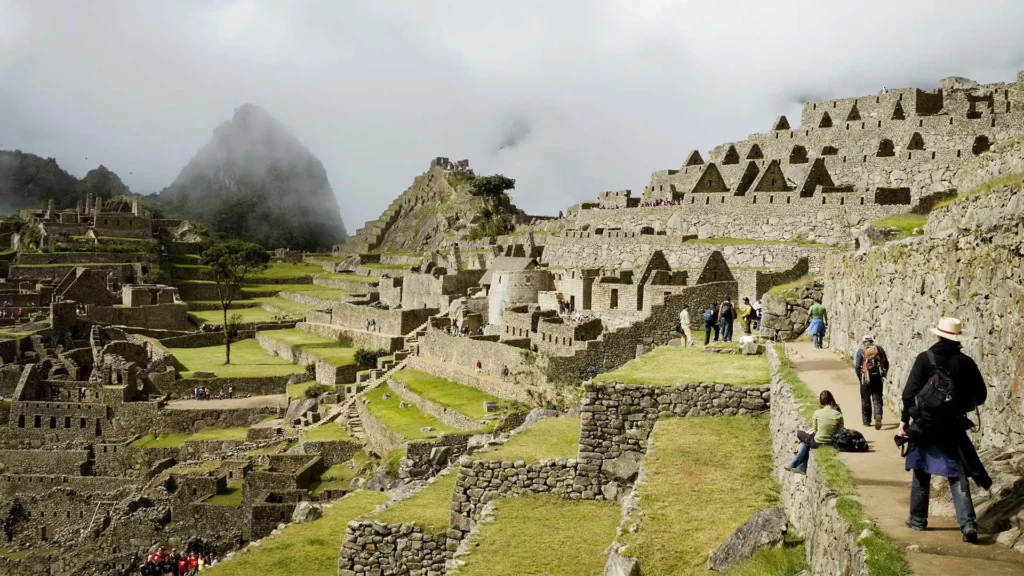
Perched high in the Andes Mountains, Machu Picchu stands as a testament to the ingenuity of the ancient Inca civilisation. This iconic site, often shrouded in mist, reveals the mysteries of the past.
Visitors are greeted by the stunning sight of stone structures, terraces, and temples that blend seamlessly with the natural landscape.
The best way to experience Machu Picchu is by taking the train from Cusco or, for the more adventurous, trekking along the Inca Trail. The journey itself is as mesmerizing as the destination, with panoramic views of the Andean mountains.
The history of Machu Picchu is as captivating as its beauty. Built in the 15th century, it was abandoned just a century later during the Spanish Conquest. Its purpose remains a subject of debate among historians – was it a royal estate, a religious site, or something else?
Exploring the ruins, visitors can ponder these mysteries, walking through the Main Plaza, the Temple of the Sun, and the Intihuatana stone, believed to have been an astronomical clock.
For travellers, a visit to Machu Picchu is more than just a tick on the bucket list; it’s a journey back in time. Wandering through this lost city, one can’t help but feel a deep connection to the past.
The site’s preservation efforts ensure that its magic remains untouched, offering a glimpse into an ancient world that continues to fascinate and inspire.
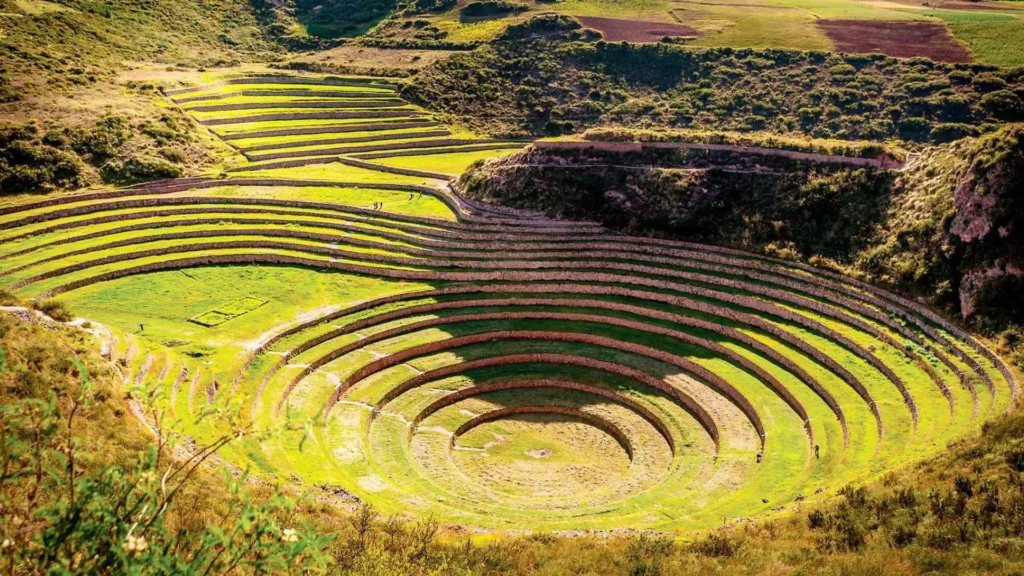
The Sacred Valley of the Incas, a lush green valley extending from the town of Pisac to Ollantaytambo, is more than just a scenic spot. It’s a living museum of Inca history and culture.
The valley, with the Urubamba River snaking through it, was a crucial area for the Incas, known for its fertile lands and as a spiritual centre. Today, it remains a place where time seems to have stood still, with locals maintaining age-old traditions and customs.
Ollantaytambo, with its massive Inca fortress, is a highlight of the Sacred Valley. This site, with its terraces climbing up steep cliffs, was both a temple and a fortress. Climbing the stone steps of Ollantaytambo offers a breathtaking view of the valley below.
The town itself is one of the best-preserved Inca settlements, giving visitors a sense of how these ancient people lived. The narrow streets and canals running through the town have been in use since the Inca times.
Pisac, another gem in the Sacred Valley, is renowned for its market and ruins. The market is a colourful tapestry of local crafts and foods, perfect for those looking to take a piece of Peru home.
The Pisac ruins, perched on a hilltop with imposing terraces, offer an insight into the advanced agricultural techniques of the Incas. These terraces, cut into the mountainside, are a testament to the Inca’s mastery of their environment, turning steep hillsides into productive farmland.
The Sacred Valley, with its blend of breathtaking scenery and rich history, is a place where one can truly connect with the spirit of the Inca civilization. It’s a journey that takes you through picturesque landscapes and centuries of history, offering a deeper understanding of Peru’s past and present.
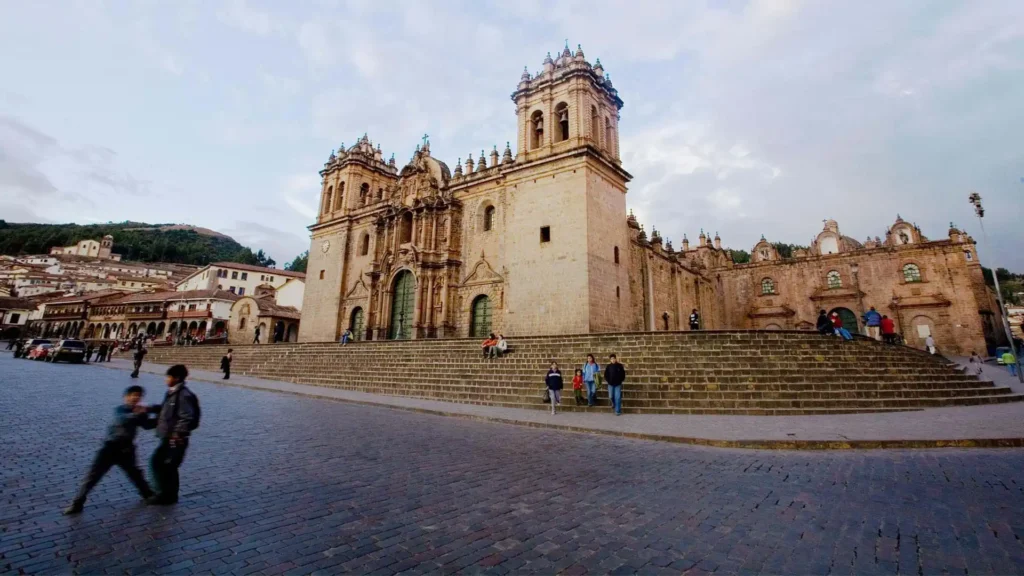
Cusco, once the heart of the Inca Empire, now stands as a city where the past and present coexist harmoniously. The Historic Centre of Cusco is a splendid showcase of this blend, where narrow cobblestone streets lead to plazas lined with colonial buildings built atop Inca foundations.
The city, sitting at an altitude of over 3,400 meters, is not just a gateway to Machu Picchu but a destination in its own right, brimming with history and culture.
At the centre of it all is the Plaza de Armas, the main square that has witnessed significant events in Peruvian history. Surrounded by churches and old buildings with ornate balconies, the plaza is a lively space where locals and visitors mingle.
The Cusco Cathedral, a baroque church built in the 16th century on the ruins of an Inca palace, dominates one side of the plaza. Its interiors are adorned with colonial art, and it houses a famous painting of the Last Supper with a local twist – Jesus and the apostles dining on guinea pig, a traditional Andean delicacy.
Wandering through Cusco, one encounters an array of historical buildings and museums. Each turn reveals a piece of the city’s rich tapestry, from the remains of Inca walls to colonial churches.
Not to be missed is the Qorikancha, or Temple of the Sun, a prime example of the fusion of Inca and Spanish architectural styles. The Inca temple, once covered in gold, was the most important shrine in the Inca Empire.
The Spanish built the Church of Santo Domingo on its foundations, creating a unique juxtaposition of cultures.
Cusco’s Historic Centre is more than just a collection of old buildings; it’s a living, breathing space where history is not just remembered but felt. Walking its streets is like traveling through time, where every corner tells a story, and the spirit of the Incas is palpable.
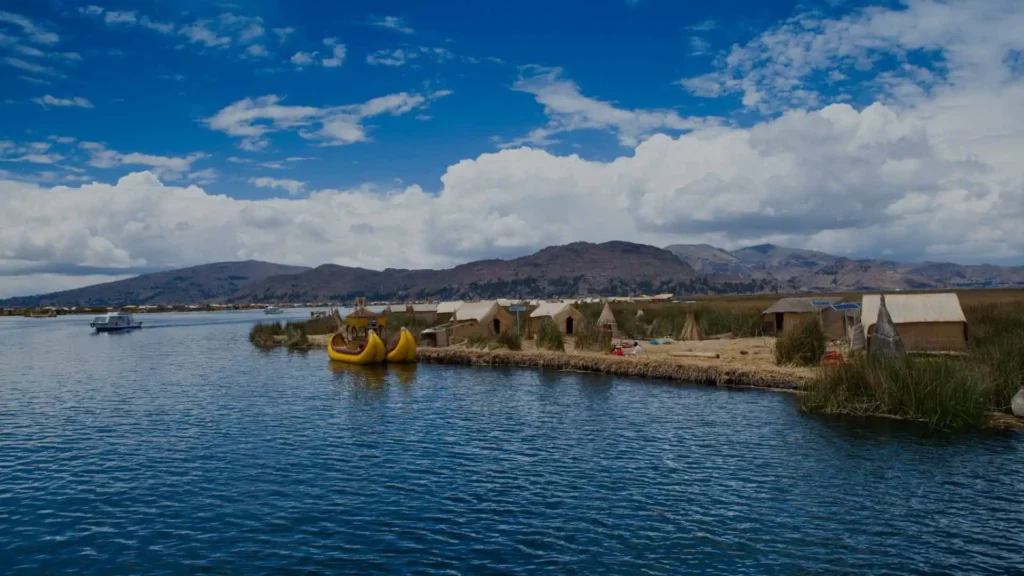
Lake Titicaca, straddling the border between Peru and Bolivia, holds a special place in Andean mythology as the birthplace of the sun. It is not only the world’s highest navigable lake but also a place of breathtaking beauty and cultural richness.
The deep blue waters of the lake contrast starkly with the stark, high-altitude landscape, creating a scene that seems almost otherworldly.
The lake is home to several unique communities, the most famous being the Uros people who live on floating islands made of reeds. These islands, constructed and maintained entirely from the totora reeds found in the lake, are a testament to the ingenuity and resilience of the Uros.
Visitors can take boat trips to these islands, where the locals demonstrate their traditional way of life and craftsmanship.
This experience is not just about witnessing a different culture but also about understanding the deep connection these communities have with their environment.
Aside from the Uros Islands, Lake Titicaca is dotted with other islands rich in history and legend. Taquile and Amantani, for instance, are known for their stunning terraces and the warm hospitality of their residents.
These islands offer a glimpse into a simpler way of life, where age-old traditions are still part of everyday living.
The residents of these islands are renowned for their intricate textiles, which are not just beautiful crafts but also carry deep cultural significance.
Lake Titicaca is a place where the beauty of nature and the richness of Andean culture converge.
The serene waters of the lake, surrounded by the Andes Mountains, create a setting of unparalleled beauty. For those visiting Peru, a trip to Lake Titicaca is an opportunity to immerse themselves in a world where myths and reality merge, and the ancient spirit of the Andes is ever-present.
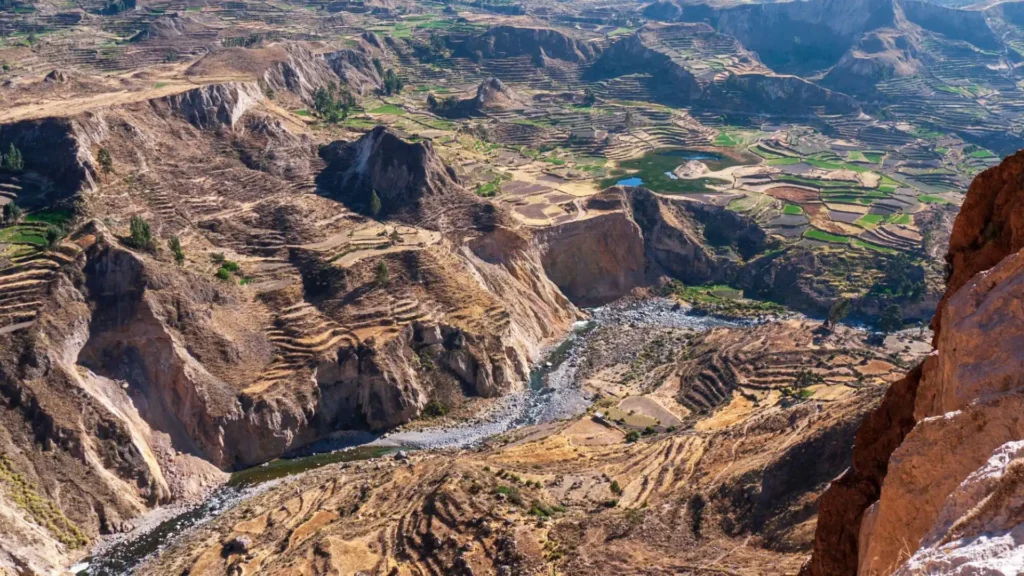
The Colca Canyon, located in the Arequipa region of Peru, offers a dramatic landscape that captures the raw beauty of the Andean highlands.
This canyon, one of the deepest in the world, is more than just a natural wonder; it’s a cultural haven, home to traditional villages and terraced agriculture that dates back to pre-Inca times. The canyon’s depth and scale are awe-inspiring, making it a paradise for hikers and nature enthusiasts.
One of the most memorable experiences in Colca Canyon is watching the majestic Andean condors soar on thermal currents. The Cruz del Condor viewpoint is a popular spot where these enormous birds, with wingspans of up to three meters, glide gracefully through the sky.
This spectacle is not just a natural wonder but also holds great cultural significance, as the condor is a sacred symbol in Andean mythology, representing power and freedom.
Beyond the natural spectacle, the Colca Canyon is dotted with charming villages where time seems to have stood still. Towns like Chivay and Yanque offer a glimpse into the traditional Andean way of life.
Visitors can explore local markets, visit colonial churches, and enjoy the region’s hot springs, known for their therapeutic properties. The local cuisine, featuring dishes such as alpaca meat and Andean potatoes, is another highlight, offering a taste of the region’s culinary heritage.
The terraced fields that climb the walls of the canyon are a testament to the engineering skills of the ancient peoples who lived here. These terraces, still in use today, paint a vivid picture of a culture that thrived in harmony with the challenging Andean environment.
A visit to Colca Canyon is not only a journey through stunning landscapes but also an encounter with a living culture that maintains a deep connection to its ancestral roots.
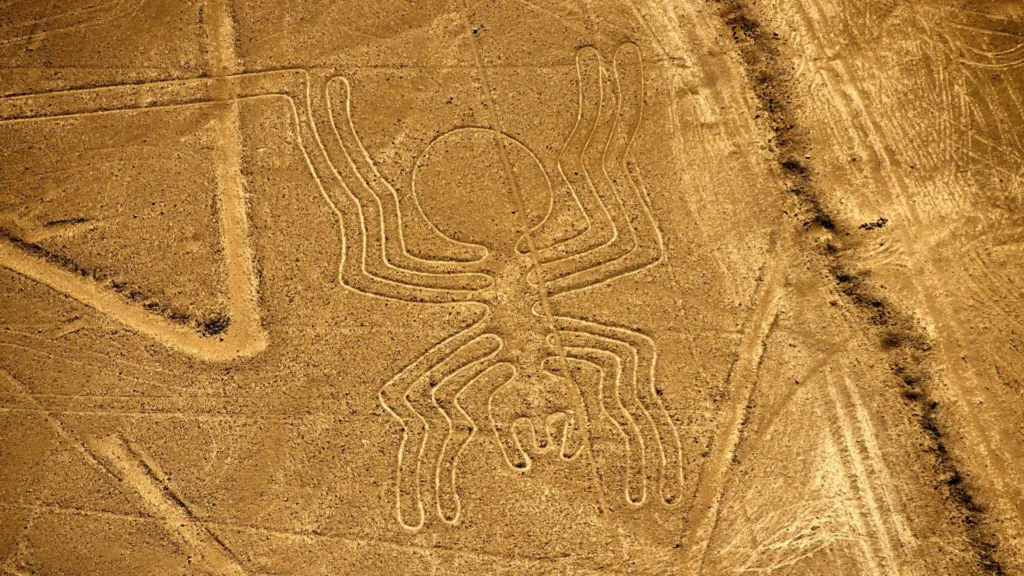
The Nazca Lines, located in the arid plains of the Nazca Desert, are one of Peru’s most enigmatic and fascinating attractions.
These large geoglyphs, created between 500 BCE and 500 CE, are a collection of hundreds of figures, ranging from simple lines and geometric shapes to intricate designs of animals and plants.
The purpose and meaning of these lines, visible only from the air or nearby hilltops, remain a mystery, fuelling intrigue and speculation among historians and visitors alike.
To truly appreciate the scale and complexity of the Nazca Lines, one must view them from above.
Small airplane tours offer a bird’s-eye view of this vast, open-air gallery, revealing the precision and creativity of the ancient Nazca people.
As the plane glides over the desert, figures like the hummingbird, monkey, and spider come into view, their forms etched into the earth on a monumental scale. These flights not only provide a unique perspective on the geoglyphs but also on the stark beauty of the Peruvian desert.
Theories about the Nazca Lines abound, ranging from astronomical calendars to ritual pathways or messages to the gods. The lines’ creation is a marvel of ancient engineering, considering the limited technology available at the time.
The Nazca people removed the reddish-brown iron oxide-coated pebbles that cover the surface of the Nazca desert and revealed the light-coloured earth beneath. In doing so, they crafted images that have withstood the test of time, largely due to the region’s stable climate.
Visiting the Nazca Lines is a journey into the unknown, an opportunity to ponder the mysteries of an ancient civilization.
These geoglyphs are not just impressive for their size and durability but also for the questions they pose about the capabilities and motivations of their creators. They are a testament to the ingenuity of ancient cultures and a reminder of the many mysteries that history still holds.
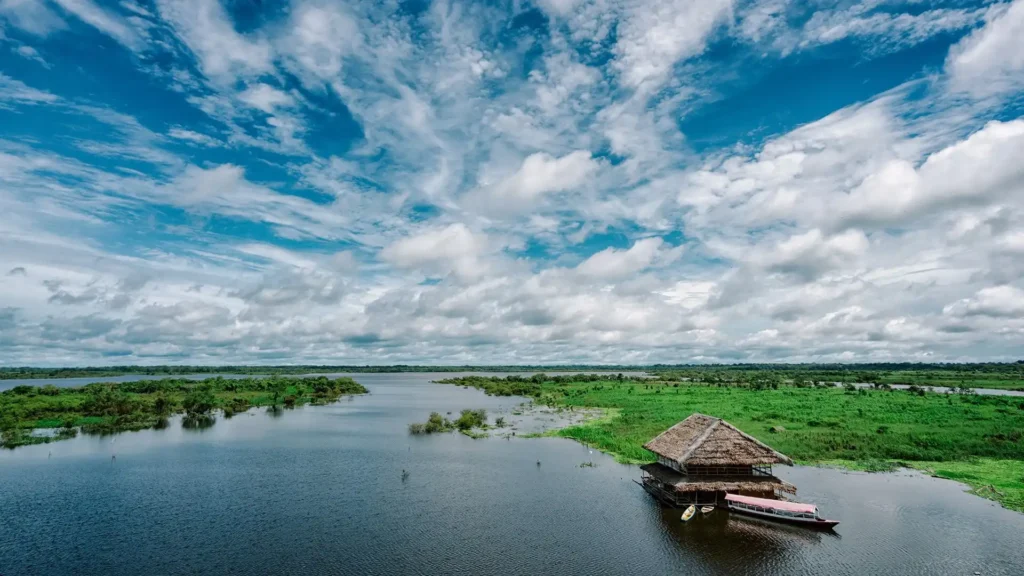
The Amazon Rainforest, accessible from Peru through gateways like Iquitos and Puerto Maldonado, is a world unto itself. This vast, biodiverse region is a symphony of vibrant colours, exotic sounds, and a stunning array of wildlife.
It’s a place where nature’s abundance is on full display, offering an unforgettable experience for those who venture into its depths.
Iquitos, a city in the heart of the Peruvian Amazon, can only be reached by river or air.
It serves as a starting point for river cruises and jungle expeditions. Cruising along the Amazon River, the largest river by discharge volume of water in the world, is an extraordinary experience.
Visitors can witness the diverse flora and fauna, from pink river dolphins to colourful macaws. Jungle lodges in the area provide an immersive rainforest experience, with guided walks and the chance to learn about the local ecology and indigenous cultures.
Puerto Maldonado, another gateway to the Amazon, offers a slightly different experience. It’s known for its accessibility to various protected areas like the Tambopata National Reserve.
Here, the biodiversity is staggering, with opportunities to see capybaras, monkeys, and countless bird species. Canopy walks and boat trips provide unique perspectives on the rainforest, while night safaris reveal a whole different side of the jungle, alive with nocturnal creatures.
The Amazon Rainforest is not just a haven for wildlife enthusiasts but also a place of cultural richness.
The rainforest is home to numerous indigenous communities, each with their own unique traditions and ways of life. Visiting these communities and learning about their relationship with the forest is a humbling experience. It highlights the importance of preserving this incredible ecosystem for future generations.
A journey into the Amazon Rainforest is a journey into the heart of nature. It’s an adventure that leaves visitors awestruck by the sheer scale and diversity of life. The experience is more than just wildlife spotting; it’s about understanding the delicate balance of this ecosystem and the vital role it plays in our world.
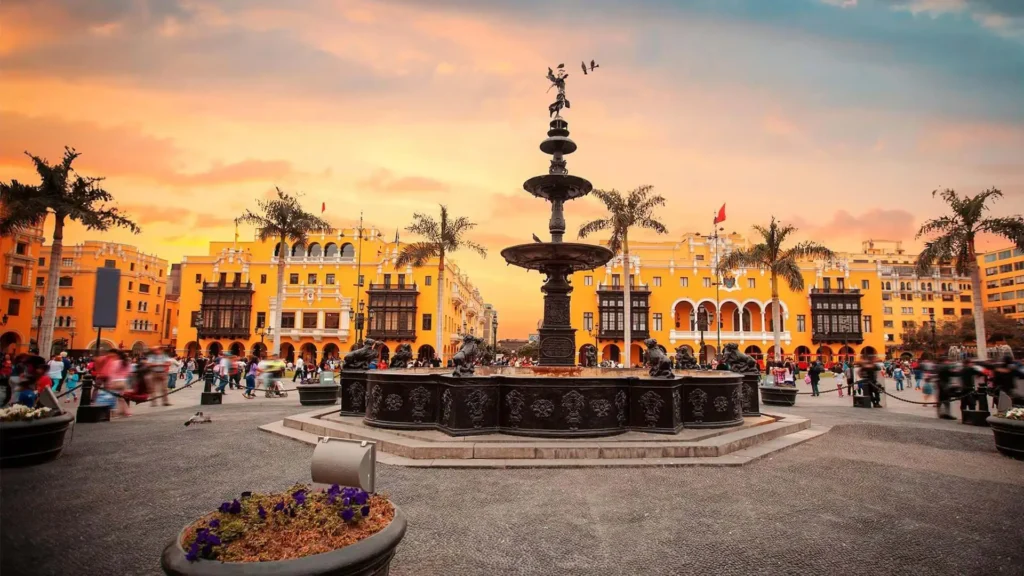
Lima, the capital of Peru, is a city where history and modernity merge to create a vibrant urban tapestry.
The Historic Centre of Lima is a UNESCO World Heritage site, celebrated for its well-preserved colonial architecture and important cultural landmarks. This area serves as a reminder of the city’s past as the most important city in Spanish South America during colonial times.
The heart of Lima’s historic centre is the Plaza Mayor, also known as the Plaza de Armas. This square is surrounded by significant buildings, including the Government Palace, the Cathedral of Lima, and the Archbishop’s Palace.
These structures are prime examples of the Spanish colonial style, with their grand facades and intricate balconies. The Cathedral, in particular, is a must-visit, housing religious art and the tomb of Francisco Pizarro, the founder of Lima.
Wandering through the streets of the historic centre, visitors will encounter a range of architectural styles, from baroque to neoclassical. The San Francisco Monastery, with its catacombs and library, is a highlight, showcasing exquisite religious art and architecture.
The monastery’s catacombs are a fascinating, if somewhat eerie, part of Lima’s history, serving as a burial place for thousands during the colonial period.
Aside from its historical and architectural significance, Lima’s historic centre is also a place to experience the city’s rich culinary culture. From street vendors selling traditional snacks to upscale restaurants offering innovative Peruvian cuisine, the area is a food lover’s paradise.
Lima is often considered the gastronomic capital of South America, and a visit to its historic centre offers a chance to taste the flavours that make Peruvian cuisine so unique.
Exploring Lima’s historic centre is like stepping back in time, but with the energy of a modern city. It’s a place where history is not just preserved in buildings and museums but is a living part of the city’s identity
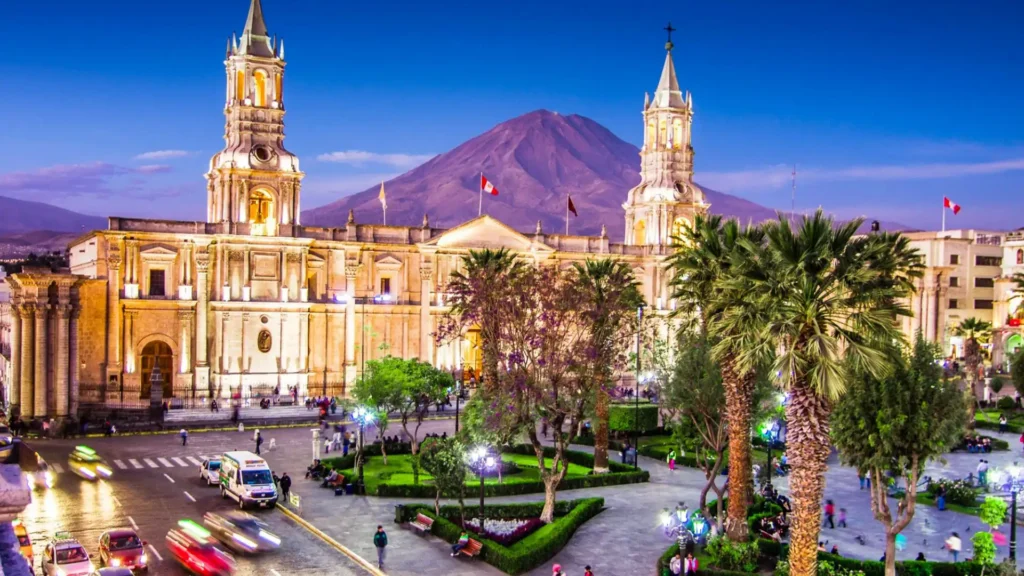
Arequipa, known as the ‘White City’ due to its many buildings made from sillar, a white volcanic stone, is a city where history and natural beauty collide.
The Historic Centre of Arequipa, a UNESCO World Heritage Site, is a testament to the city’s rich cultural and architectural heritage. The city is framed by three impressive volcanoes, creating a dramatic backdrop to the elegant colonial architecture.
The Santa Catalina Monastery is a highlight of Arequipa’s historic centre. This monastery is a city within a city, with its vibrant walls, narrow streets, and small plazas.
It provides a glimpse into the lives of the nuns who have lived there since the 16th century. The monastery is renowned for its bright colours and peaceful atmosphere, offering a tranquil retreat from the bustle of the city.
Arequipa’s Plaza de Armas is another focal point of the city’s historic centre. It’s a spacious and picturesque square, surrounded by impressive colonial buildings, including the Basilica Cathedral of Arequipa.
This cathedral, spanning the entire length of one side of the plaza, is an architectural masterpiece with its twin towers and stunning interior. It houses a museum that displays religious art and artifacts, offering insight into the region’s history.
The city’s historic centre is not just about the past; it’s a vibrant part of Arequipa’s contemporary life. The streets are lined with cafes, restaurants, and shops selling local crafts. The cuisine in Arequipa is unique, blending traditional Peruvian ingredients with Spanish and indigenous influences.
A visit to the city’s historic centre is incomplete without trying local specialties like rocoto relleno (stuffed spicy peppers) and ocopa Arequipeña (a traditional potato dish).
Arequipa’s historic centre captivates visitors with its blend of natural beauty, history, and culture.
The city’s unique architecture, made from the white volcanic stone, shines under the bright Andean sun, creating a luminous atmosphere that is both enchanting and inviting. It’s a place where every corner tells a story, offering a journey through time and a celebration of Peruvian heritage.
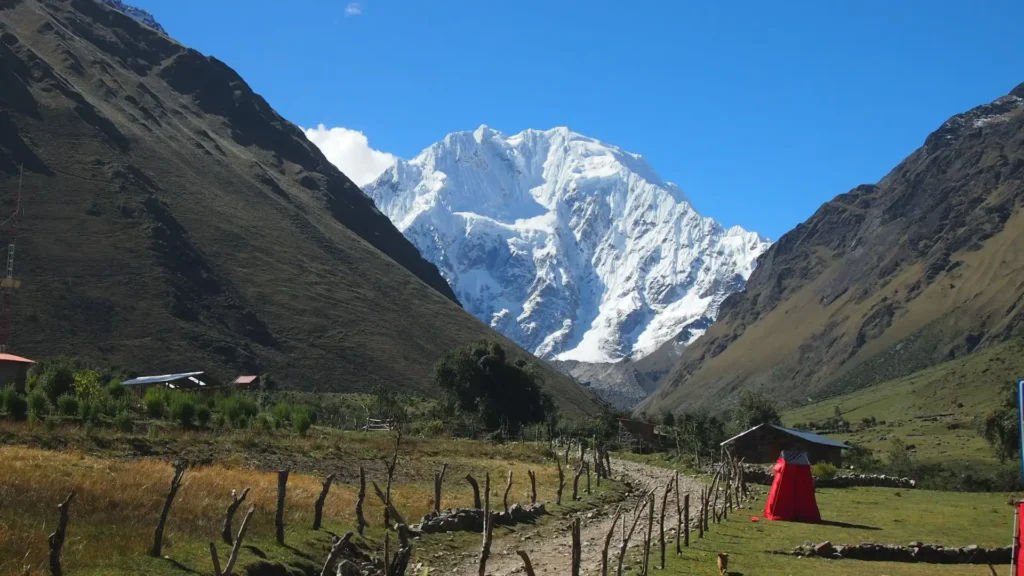
The Salkantay Trek is a stunning alternative to the more famous Inca Trail, offering a journey through some of Peru’s most beautiful and varied landscapes. This trek takes adventurers through the magnificent Andes Mountains, showcasing glacial lakes, cloud forests, and the rich biodiversity of the region.
It’s a challenging yet rewarding experience, culminating in the arrival at Machu Picchu, one of the world’s most extraordinary archaeological sites.
The trek usually spans five days, starting with a journey towards the Salkantay Pass. At an altitude of 4,630 meters, this pass offers breathtaking views of the Salkantay Mountain, one of the most sacred peaks in Inca mythology.
The path then descends into lush cloud forests, home to a wide array of flora and fauna, including orchids and hummingbirds. This change in landscape highlights the diverse ecosystems of Peru.
One of the most memorable aspects of the Salkantay Trek is the opportunity to experience the Andean way of life.
Many treks include visits to local communities, where trekkers can learn about traditional farming practices and indigenous culture. These encounters add a rich cultural dimension to the trek, providing a deeper understanding of the people who have lived in these mountains for centuries.
The Salkantay Trek is more than just a hike; it’s a journey of discovery. Each day brings new landscapes, from snow-capped peaks to tropical forests, reflecting the stunning diversity of the Peruvian Andes.
The trek is a testament to the beauty and complexity of the natural world, offering an unforgettable adventure for those who undertake it.
Exploring Peru’s top attractions is an adventure that delves into the heart of the country’s rich history, diverse landscapes, and vibrant culture. From the ancient ruins of Machu Picchu to the bustling streets of Lima, each destination offers a unique glimpse into the many facets of Peru.
Whether it’s the tranquillity of Lake Titicaca, the mystery of the Nazca Lines, or the natural splendour of the Amazon Rainforest, Peru is a country that captivates and inspires.
Each journey through this magnificent land is a step into a world of wonder, a chance to connect with the past and embrace the present in one of the most beautiful countries on earth.